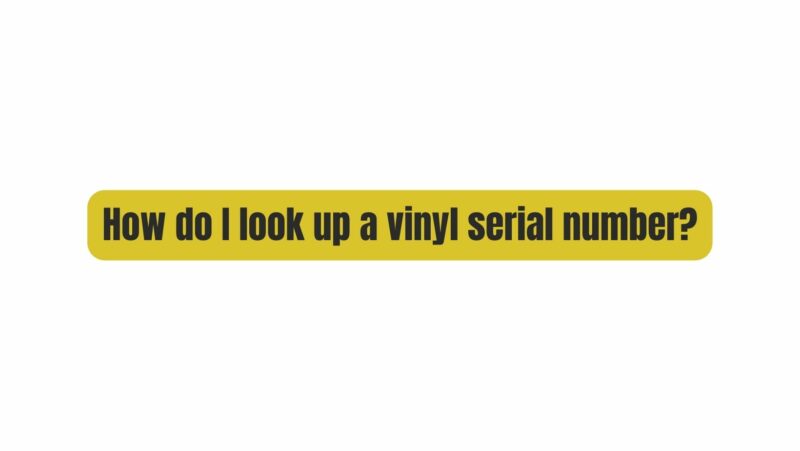In the vast world of vinyl collecting, the serial number etched into each record—often referred to as the matrix number or runout code—serves as a fingerprint that can reveal a plethora of information about that particular pressing. From its origins to its version and even sometimes quirky messages from the pressing plant staff, this number holds secrets waiting to be unraveled. This guide aims to walk you through the process of looking up a vinyl serial number and what you might discover in doing so.
The Importance of Vinyl Serial Numbers
Serial numbers on vinyl records are not just arbitrary sequences of numbers and letters. They serve multiple purposes:
- Identification: The serial number can help identify the pressing plant, the mastering process, and sometimes even the mastering engineer.
- Variations and Reissues: Multiple versions of an album often have slight variations in the serial number, enabling collectors to differentiate between different pressings.
- Authentication: For particularly rare or valuable records, the serial number can help verify authenticity.
Locating the Serial Number
Before looking it up, you first need to locate the serial number:
- Visual Examination: Hold the record up to a light source, tilting it slightly. The number is typically etched or stamped into the runout groove area, which is the flat section closest to the label.
- Readability: Some numbers are clearly stamped, while others might be etched by hand, making them harder to decipher. A magnifying glass can assist in reading faint or intricate inscriptions.
Steps to Look Up a Vinyl Serial Number
- Record the Number: Write down the serial number precisely as it appears, noting any special characters or spaces.
- Choose a Resource: Several databases and websites cater specifically to vinyl enthusiasts and contain extensive catalogs of serial numbers and associated information.
- Discogs: Arguably the largest online vinyl database, Discogs allows you to enter a serial number into their search bar to pull up information about the record.
- Vinyl Record Guide (VRG): VRG is another resourceful site with an extensive database.
- 45cat: For 45 RPM singles, this is a comprehensive database.
- Enter the Serial Number: Input the serial number into the search bar of your chosen database.
- Analyze the Results: Once you’ve received the search results:
- Edition and Pressing: Verify the edition or specific pressing of the record.
- Release Information: Check the release year, label, country of origin, and other pertinent information.
- Track Listing and Variations: Occasionally, different pressings might contain slight variations in track listings.
- Additional Resources: If the initial search doesn’t yield satisfactory results, consider checking collector forums or reaching out to vinyl communities for assistance. Experienced collectors often have insights that aren’t immediately available online.
Deciphering Serial Numbers
Some serial numbers, especially those from certain labels or pressing plants, contain codes or patterns that can provide additional information:
- Label-Specific Codes: Some record labels, especially larger ones, had their own systems for coding serial numbers, which might denote things like mono vs. stereo pressings.
- Mastering and Pressing Plant Indicators: Certain mastering studios or pressing plants have identifiable signatures or codes.
- Date Codes: Some serial numbers incorporate date codes, indicating when the record was pressed.
Limitations and Considerations
- Incomplete Databases: While many resources exist, no single database has every record ever made. Sometimes, especially for very obscure releases, information might be scant.
- Misinterpretations: Serial numbers, especially handwritten ones, can sometimes be misread. Double-check if unsure.
- Bootlegs and Fakes: Authenticating especially rare or valuable records requires more than just a serial number check. Bootleg copies might replicate original serial numbers.
Conclusion
The intricate world of vinyl collecting is replete with nuances and details that can enhance the experience for enthusiasts. Serial numbers, those seemingly cryptic codes etched into the heart of every record, offer a gateway into the rich history and specifics of each pressing. By learning to decode and look up these numbers, collectors not only authenticate their treasures but also connect more deeply with the music and its journey onto vinyl. Whether you’re a seasoned collector or just starting, understanding the importance and method of looking up vinyl serial numbers can enrich your vinyl journey, one record at a time.


